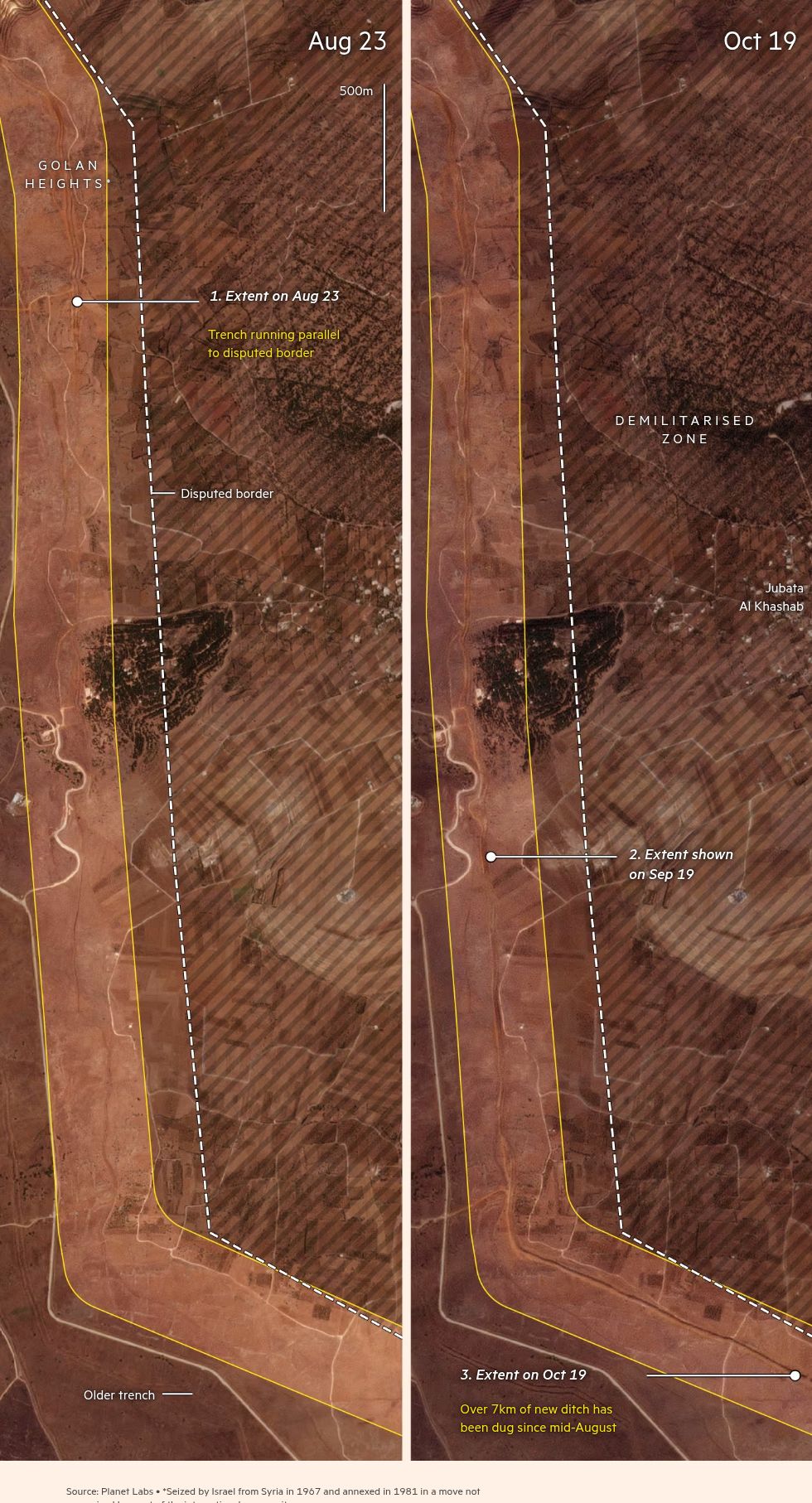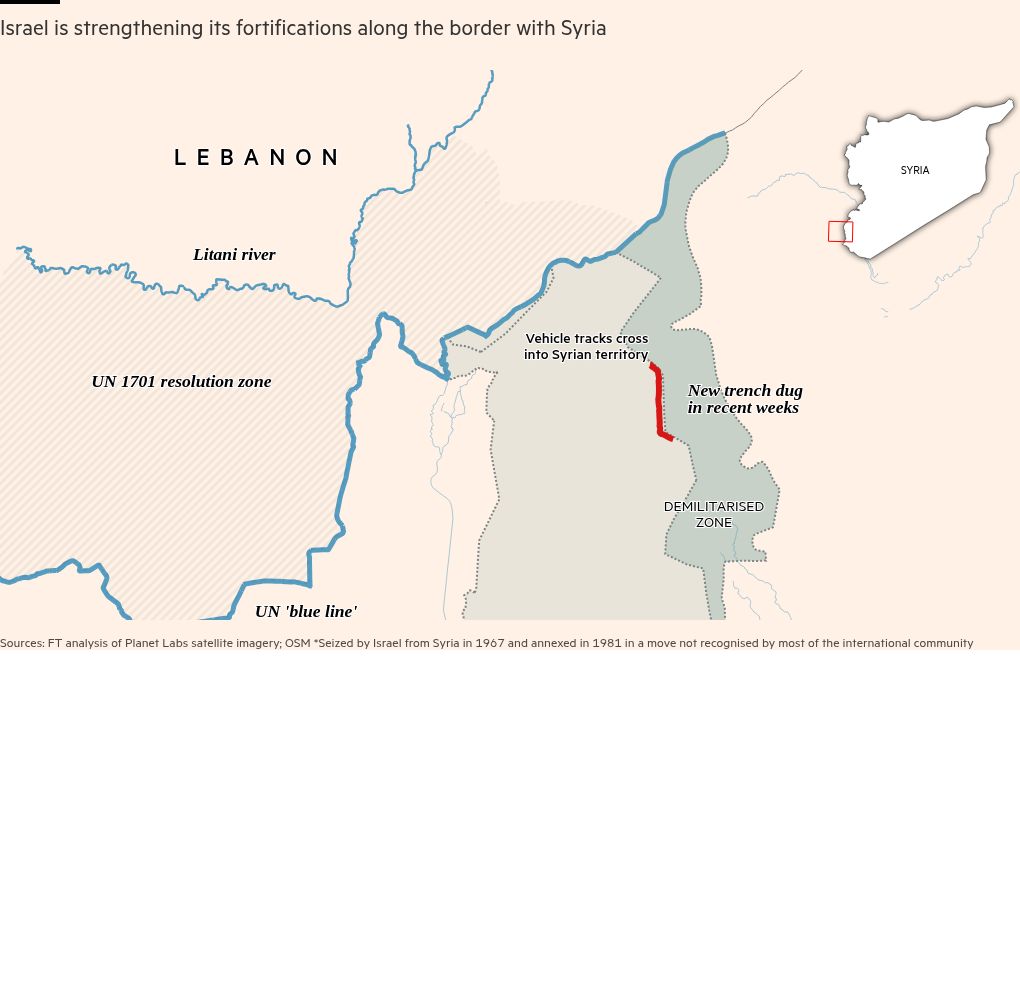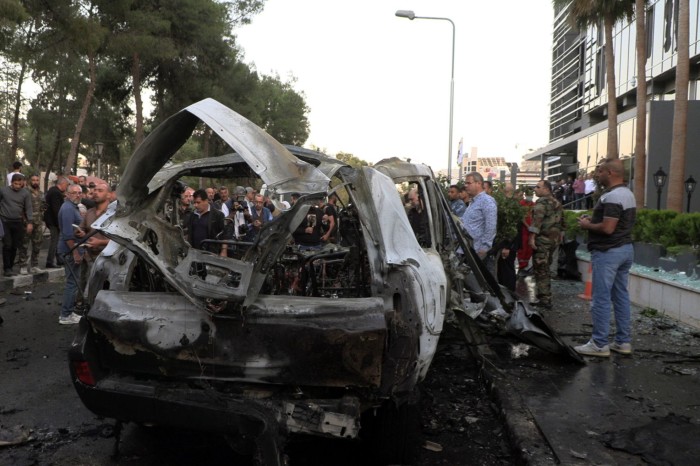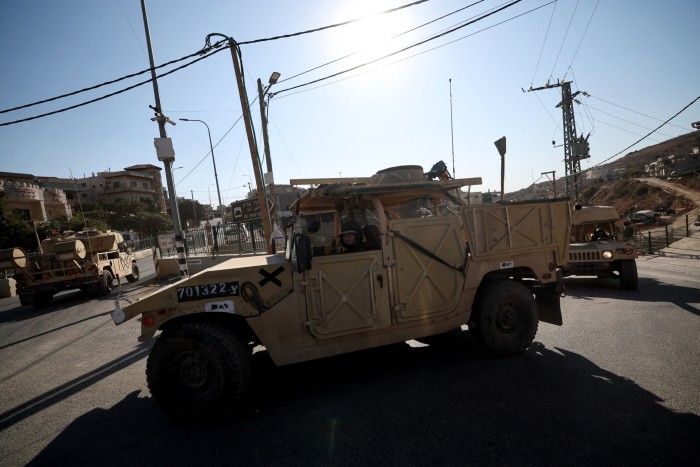
The Israeli military appears to have dug a trench at least 7km long tracking the border between the Israeli-occupied Golan Heights and southern Syria since mid-August, satellite imagery shows.
Iranian-backed militias including Hizbollah are present in southern Syria, creating another potential front as Israel fights in Gaza and Lebanon.
Israel’s defensive reinforcements come as it prepares to see off any potential threats from civil war-torn Syria after expanding its offensive against Hizbollah in Lebanon. Israel is also preparing to retaliate against Iran’s ballistic missile bombardment earlier this month.
Geir Pedersen, the UN special envoy for Syria, told the UN in New York that the regional peacekeeping body, the UN Disengagement Observer Force (UNDOF), had seen “construction activity” by the Israeli military near the demilitarised so-called area of separation.
“In the Golan, some construction activity has been carried out by the Israel Defense Forces in the vicinity of the area of separation,” Pedersen said on Wednesday. “During this activity, UNDOF observed an Israeli battle tank and excavators cross the ceasefire line into the area of separation.” Pedersen did not specify exactly where the diggers had been seen.

Another person with direct knowledge said that the UN peacekeepers had noticed Israel strengthening its defensive positions in the occupied Golan. Three UNDOF positions are located less than 1.5km from part of the freshly dug earthworks. UNDOF, which is tasked with monitoring the border area, did not respond to a request for comment.
“It appears that Israel has reinforced its defences along its frontline with southern Syria,” said Haid Haid, a consulting fellow with London-based Chatham House.
A Financial Times analysis of satellite imagery found that the trench was 20 metres wide in places. At the earthwork’s northern end, tracks or markings stray across the border into Syrian territory.

Israel has occupied the Golan Heights since capturing it from Syria during the 1967 Six Day war between Israel and several Arab states. Fourteen years later, Israel annexed more than 1,000 sq km, although its claim to sovereignty over the area is not recognised by most of the international community.
Israel has long targeted Iranian-backed groups in Syria, including Hizbollah, fearing they would use the shattered country as a staging post to launch attacks on the Jewish state.
With Israel on the offensive against Hamas and Hizbollah, escalation in Syria would pose a fresh risk to Bashar al-Assad’s embattled regime, whose rule is buttressed by Russian military advisers and air power, Iran and Iran-backed militants.
Charles Lister, director of the Syria and countering terrorism and extremism programmes at the Middle East Institute in Washington, said concerns had grown “that despite the fact that until now Bashar appears determined to keep the Syrian state out of direct involvement in regional hostilities, that may not be possible to sustain forever”.
Israeli Prime Minister Benjamin Netanyahu “may actually choose to involve Syria more directly . . . almost forcing Syria to become part of the equation, in which case defensive lines on the Golan will be vitally important”, added Lister.
Asked about Israel’s operations and objectives in Syria, an Israeli military official said: “Assad should choose sides.”

With the Syrian army hollowed out after 13 years of brutal civil war, and the country in a continuing economic crisis, analysts assess that Assad — with stretched military resources — would prefer to avoid inviting severe Israeli retribution.
But Syria is already under fire. According to Pedersen, the Syrian government says Israeli raids have killed more than 100 people in at least 116 air strikes since October 7 last year, when Hamas triggered the Gaza war with a devastating attack on Israel.
These include a spate of Israeli air strikes in the upmarket Mazzeh area of Damascus in recent weeks. Syrian state media reported Israeli strikes on Wednesday night in a residential area of Damascus, and a military site in Homs.
“Unquestionably, the intensity of Israel’s actions has surged in recent months,” said Lister.
Israel rarely comments on its actions in Syria, and its military did not respond to comment requests on its defensive build-up in the Golan.

Southwestern Syria, which abuts the occupied Golan and where the country’s minority Druze sect is concentrated, has a complex security landscape. Previously a hotbed of opposition to the Assad regime, Russian and regime forces have sought to pacify the region with a reconciliation deal. But organised crime has proliferated and individual warlords have become powerful, destabilising the area.
Israel will be most concerned about the local factions linked to Iran. “Many of these groups, particularly in [the area of] al-Quneitra, are aligned with Iran and Hizbollah,” said Haid. “This affiliation has allowed Iran to sustain its influence in the region, even with a limited direct presence.”
Hizbollah has been able “to mobilise its allies to launch attacks against Israel from Syrian territory, despite the Syrian regime’s efforts to avoid entangling the country in the axis of resistance’s skirmishes with Israel”, said Haid.
However, Russian and Syrian regime forces have this week conducted military exercises on the Golan Heights border, according to London-based war monitor the Syrian Observatory for Human Rights, which has noted Russian military observation posts and patrols being set up in southwestern Syria in recent weeks.